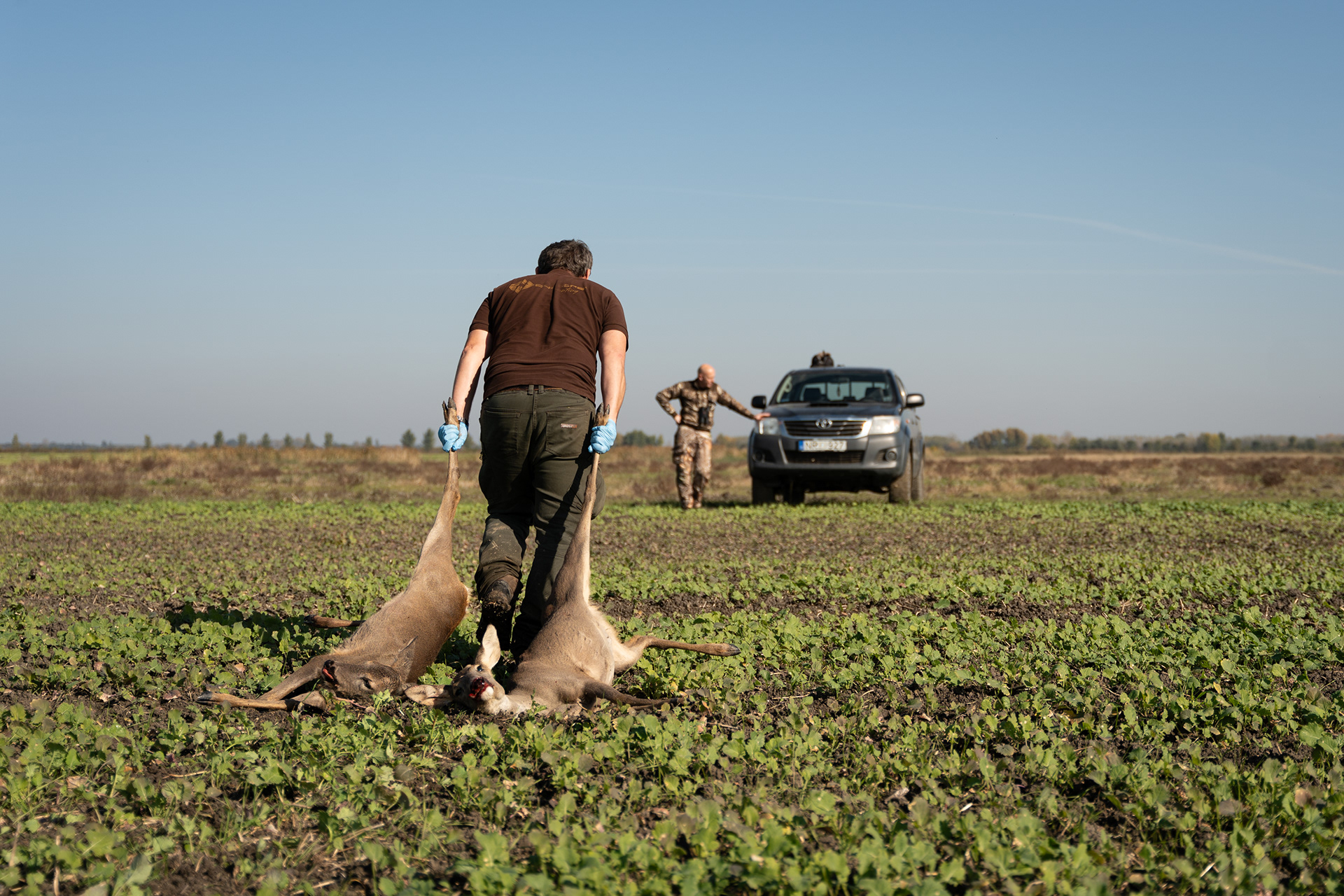Tiszaszentimre, Hungary, 2024 - ongoing project
In our urbanized world, we live in a kind of bubble, disconnected from the everyday workings of nature. We go to great lengths to bring bits of nature into our homes, yet we’re shocked when a wild boar appears in the suburbs.
In this series, I want to shed light on the role of modern gamekeepers - those who work in and alongside nature. With no apex predators to regulate wildlife, it falls to them to manage animal populations, maintain their health, and ensure the long-term sustainability of their habitat. Their job is a constant balancing act between nature and human intervention, striving to protect both the wildlife and the environment without either suffering excessively.
A gamekeeper is responsible for managing wildlife and natural habitants, primarily in areas designated for hunting. He has a wide range of tasks, such as monitoring animal populations, ensuring a sustainable balance of game species, and protecting biodiversity; organising and supervising hunting activities, ensuring ethical practices and maintaining safety standards for hunters. He has to keep accurate records of game populations and has to work alongside other conservationists, landowners and community members to promote the health of local ecosystems.
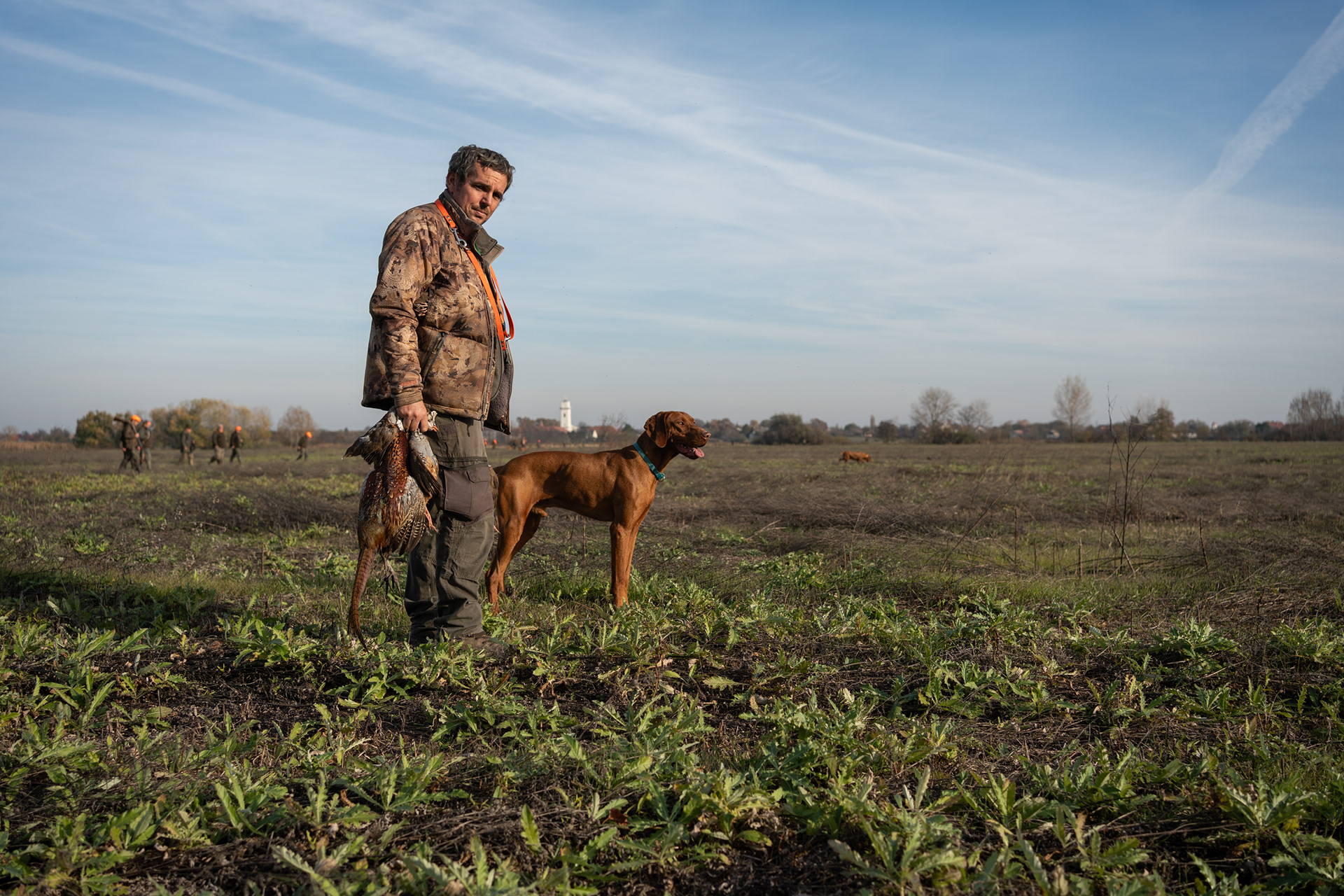
Tamás Kriston is a gamekeeper working in the Tiszaszentimre area near Lake Tisza.
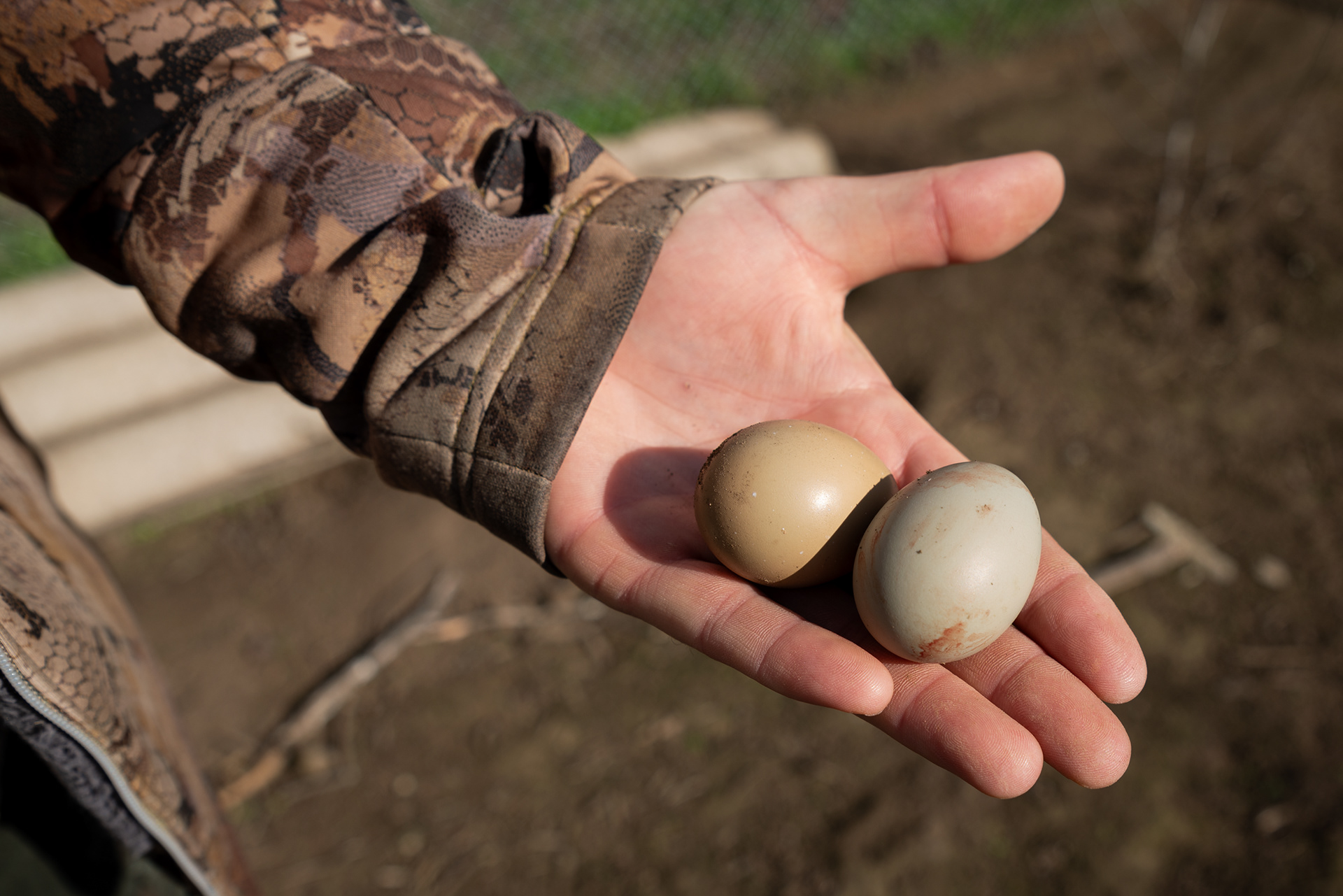
Pheasant eggs. Around Lake Tisza, wildlife habitats are shrinking. As a result, the hunting association maintains a pheasant farm to support hunting activities, with part of the population replenishment coming from here.
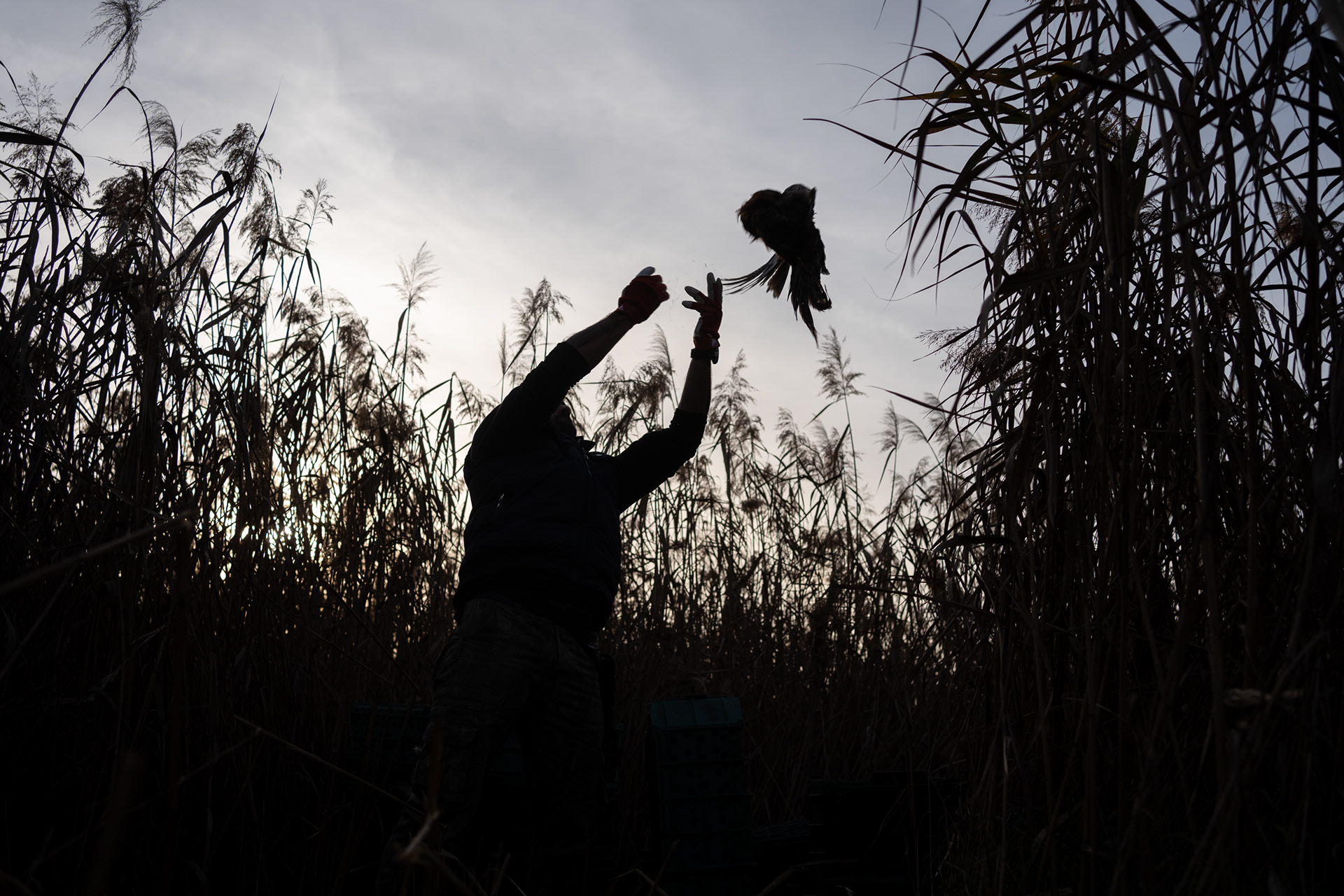
Releasing pheasants before the hunt.
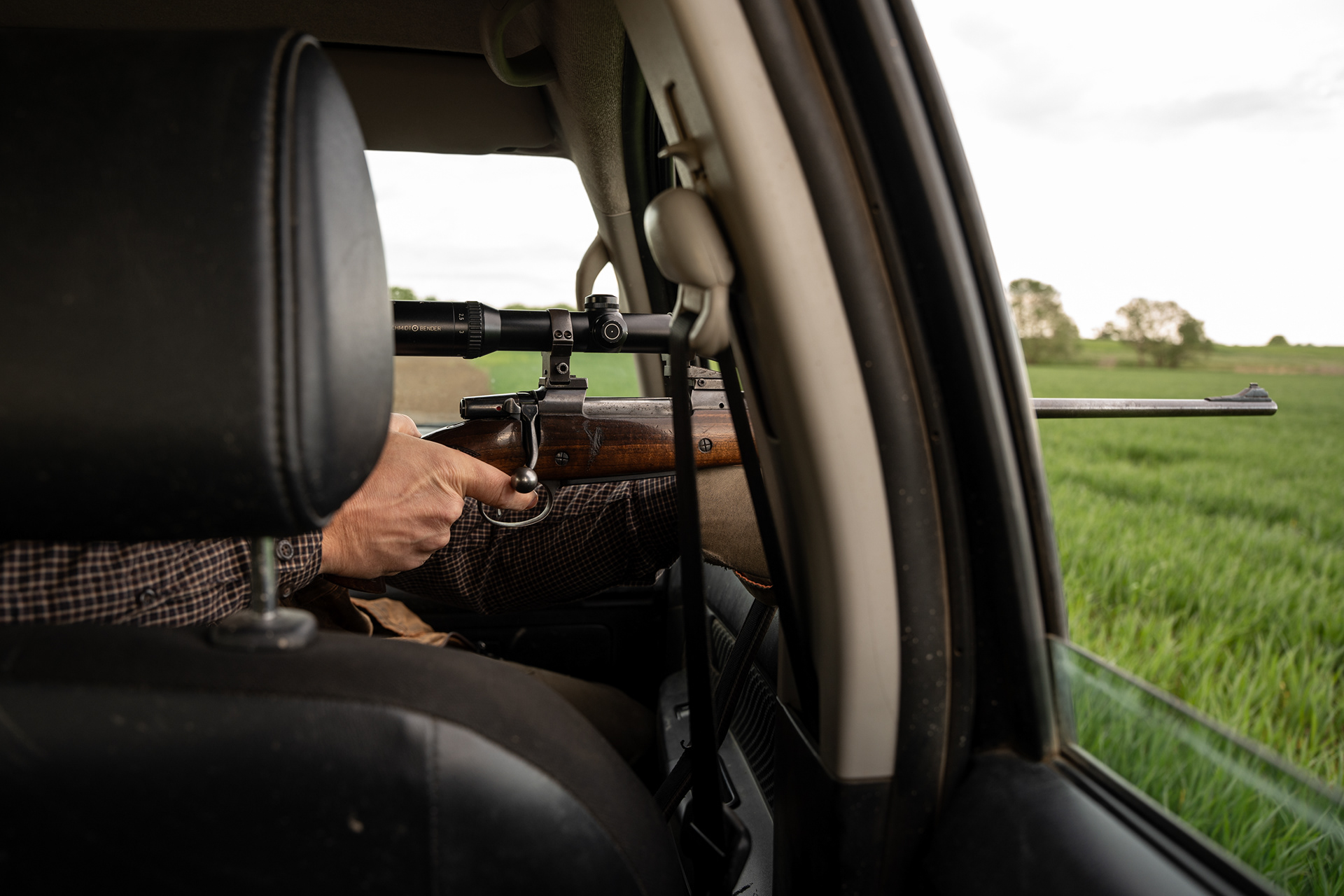
His duties include escorting hunters and selecting animals for culling, considering population dynamics and hunters’ needs. During scouting by car, shooting is only allowed from a stationary vehicle.
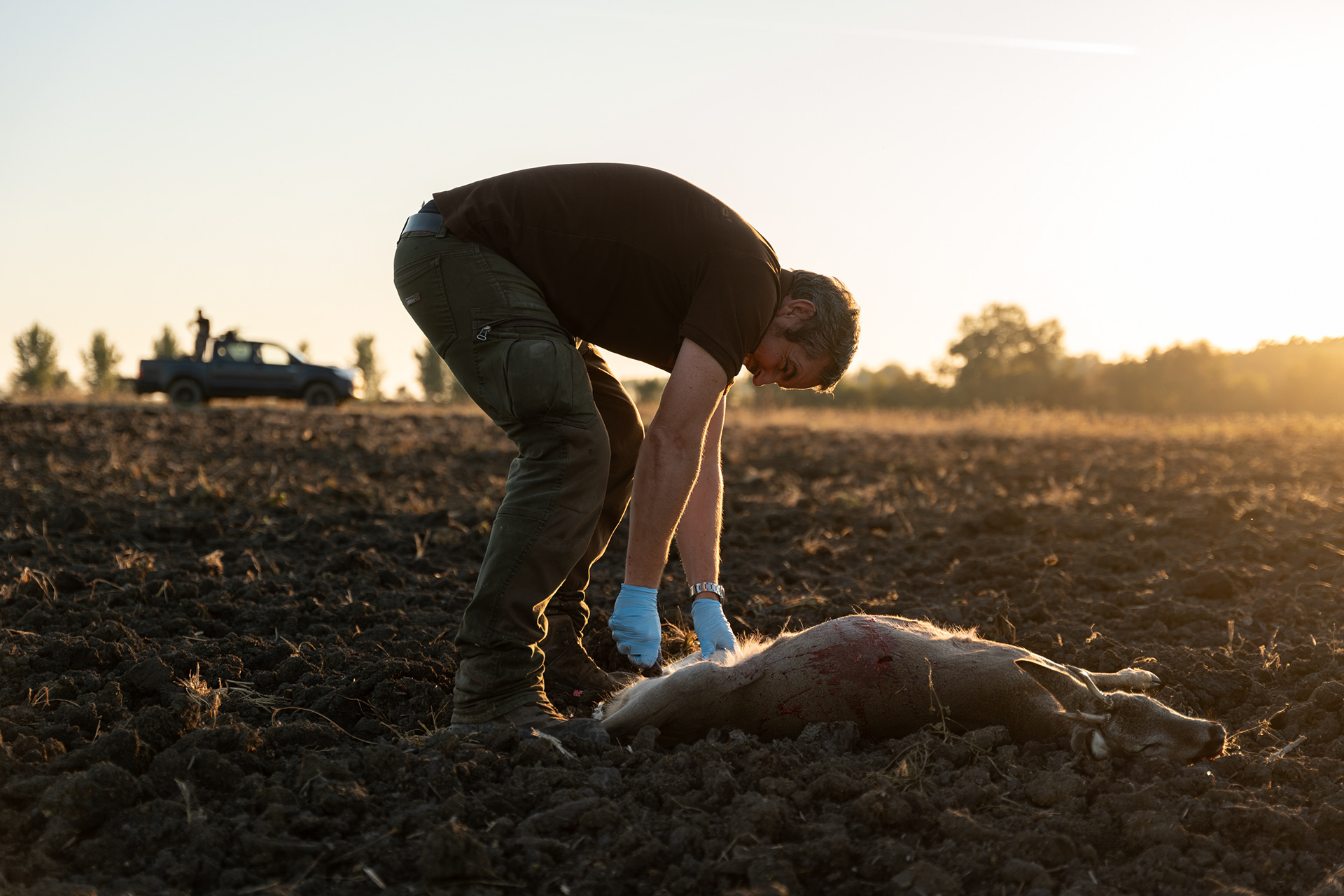
Tamás field-dresses the culled animals on-site as soon as possible to ensure rapid body heat loss, which prevents bacteria from growing on the surface of the carcass.The leftover entrails are consumed by predators.
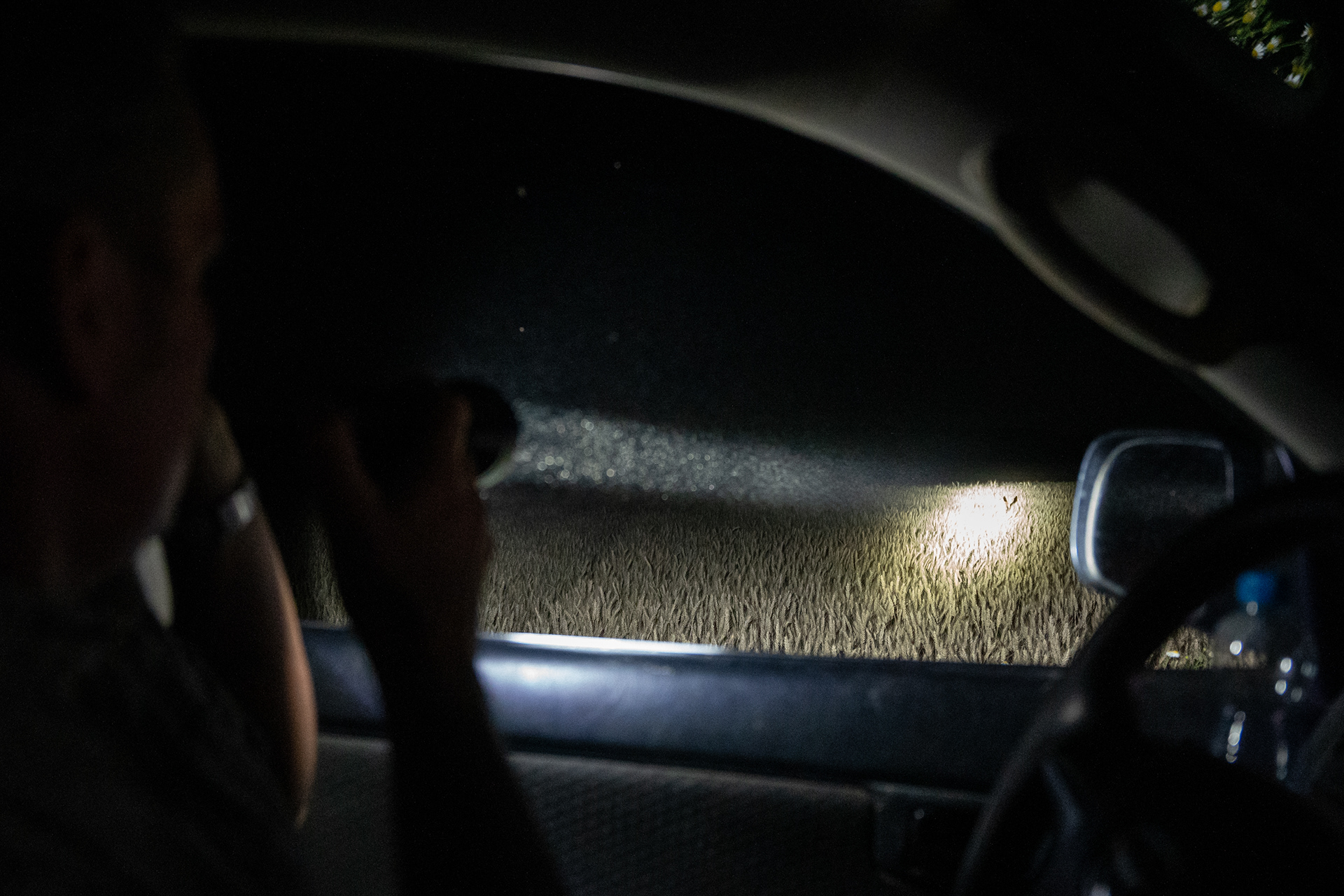
During wild boar culling, the roe deer population is also monitored. Hunting associations are responsible for preventing wildlife damage in their areas. There is a conflict of interest between agriculture and hunting, aiming to maintain a balance.
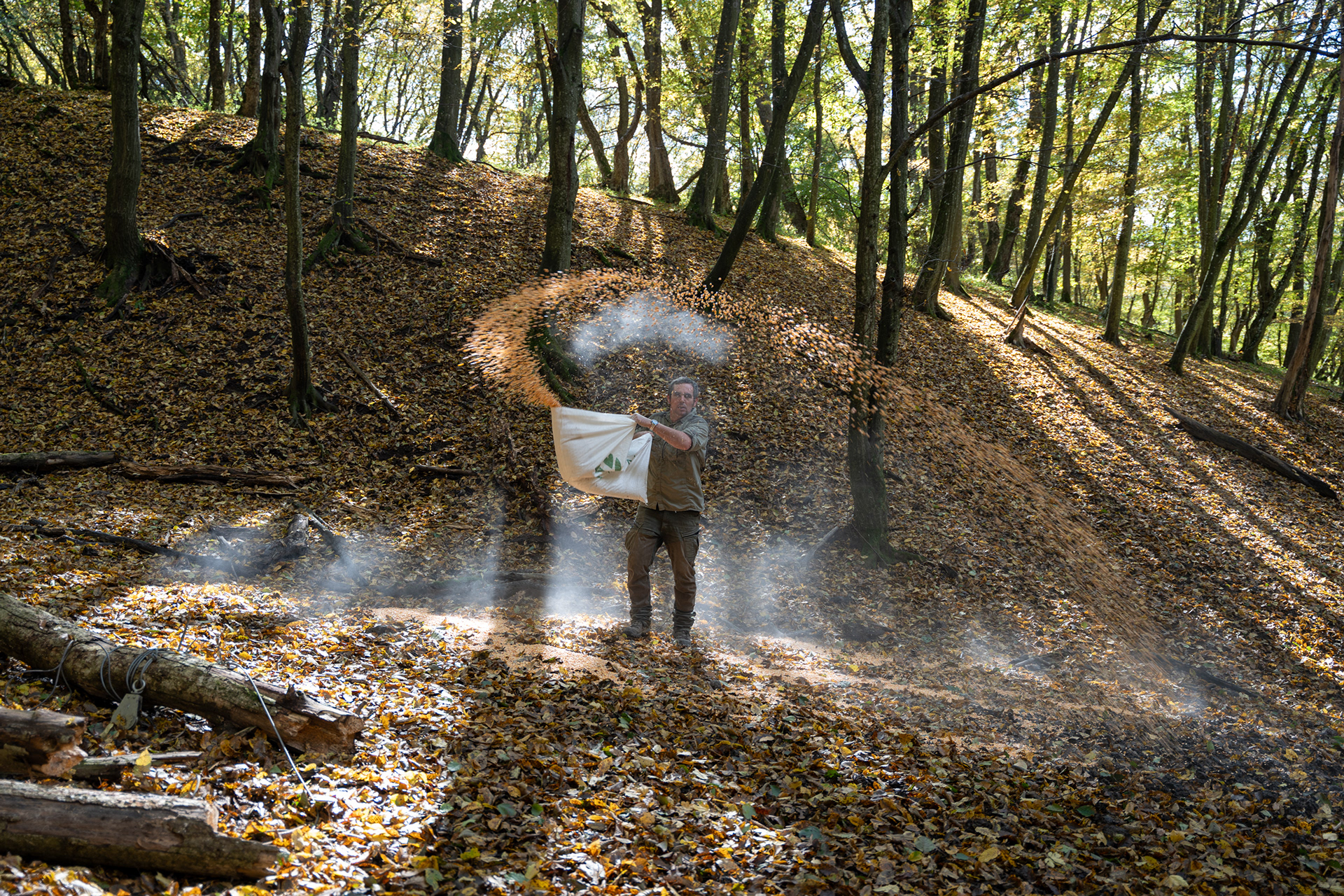
Feeding mouflons and wild boars with corn. Wildlife feeding helps reduce damage on agricultural land caused by game and keeps animals in the area, making hunting easier.
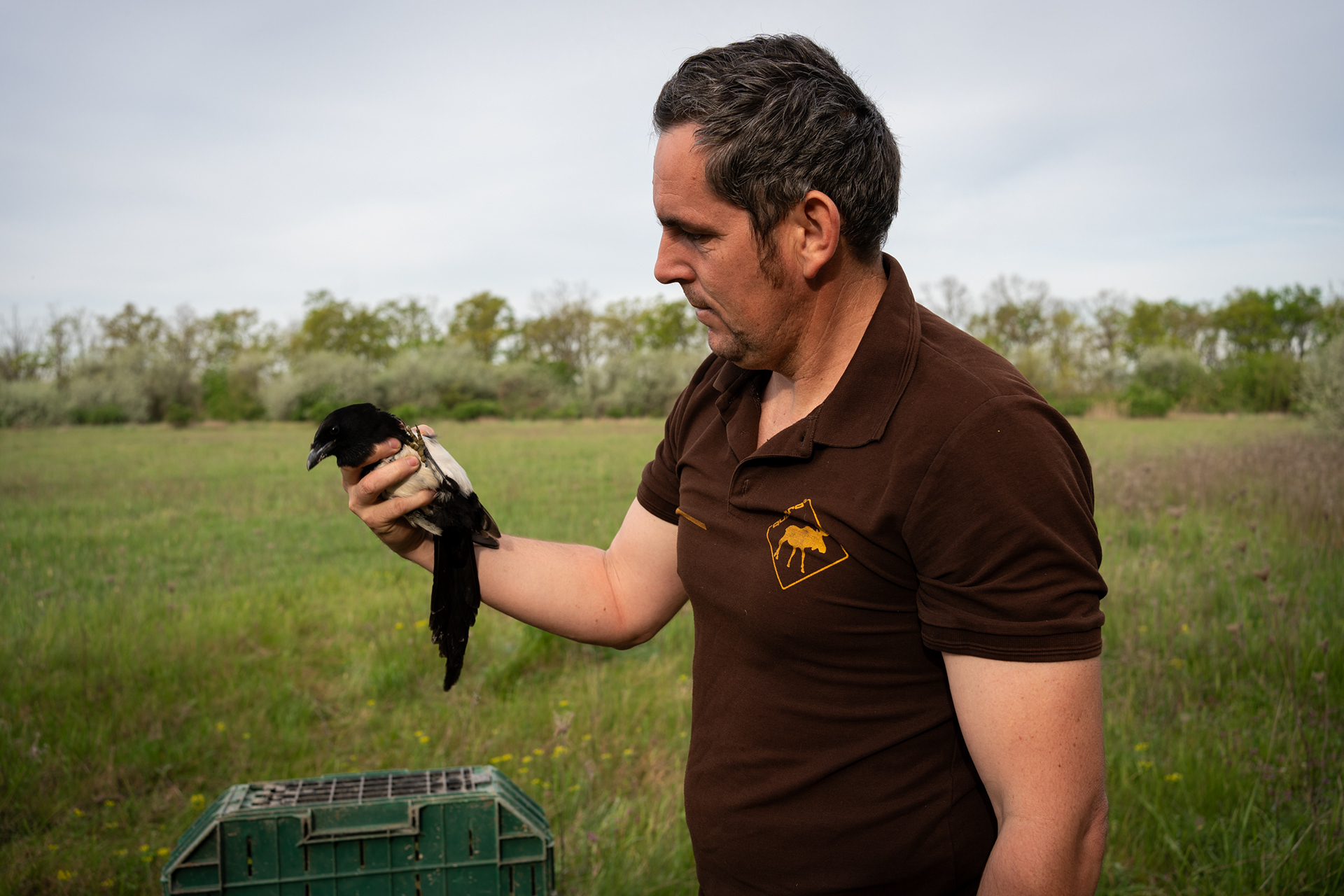
Culling magpies, notorious for nest robbing, is a challenging task. These highly intelligent birds are mainly captured using traps.
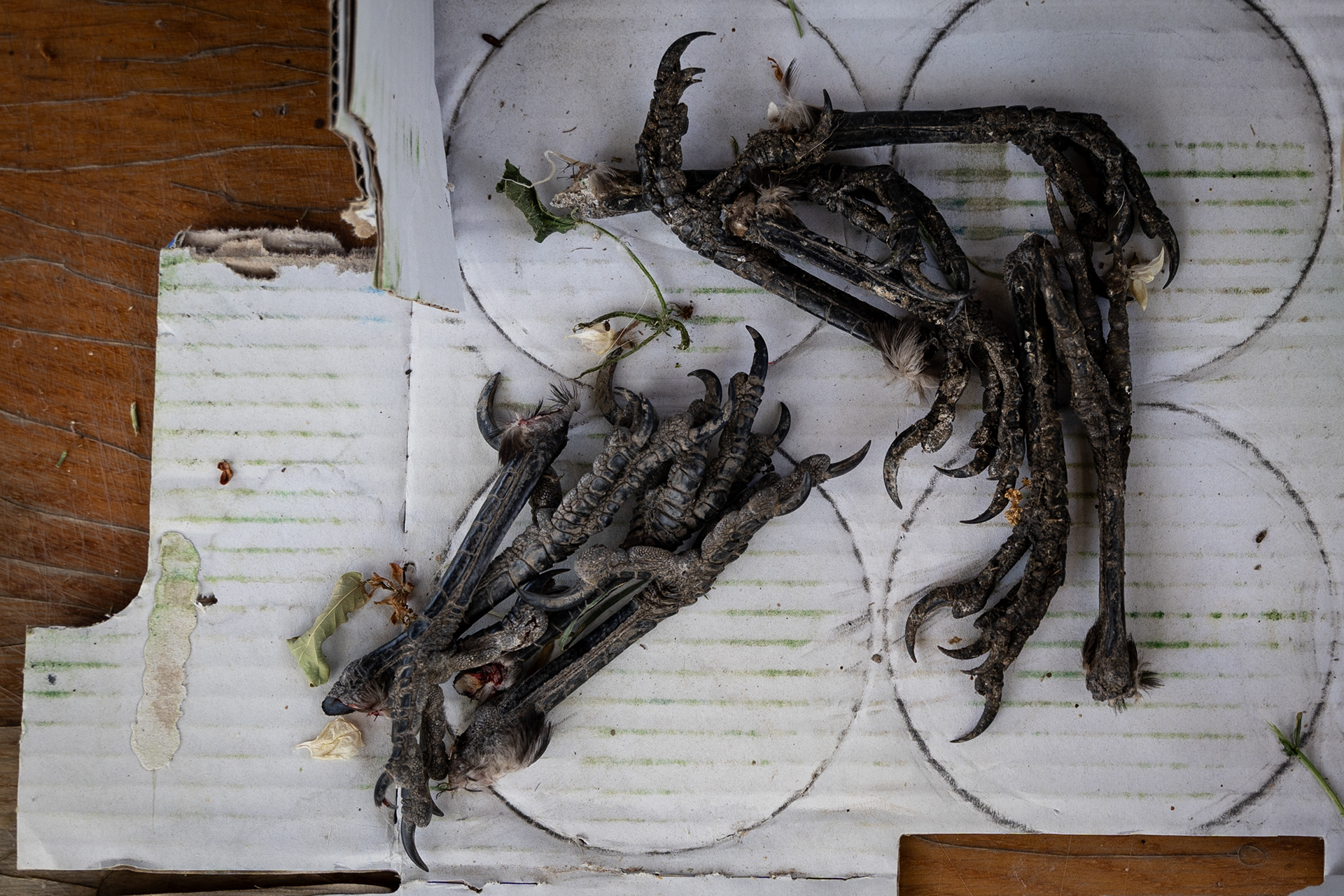
Estimating predator populations is also part of the job. Based on this, the hunting authority sets the minimum quota, monitored by the regional chief gamekeeper. Afterward, “predator signs” (magpie legs, fox ears, etc.) are destroyed.
